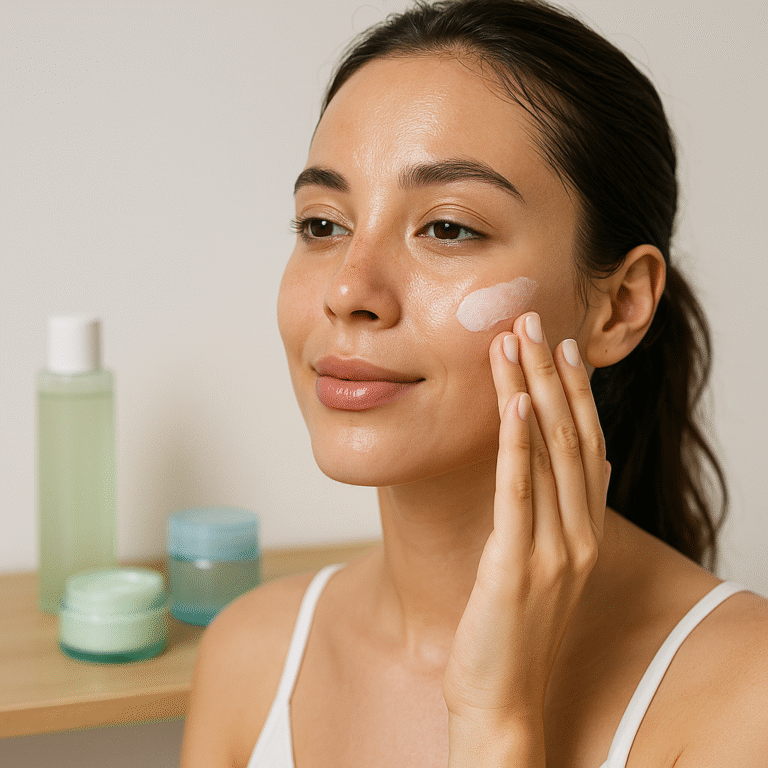How to Repair a Damaged Skin Barrier Naturally
The skin barrier is your body’s first line of defense. When it’s compromised, you may experience redness, tightness, flaking, or increased sensitivity. Repairing a damaged skin barrier doesn’t require expensive treatments — in fact, natural methods are often the most effective and gentle. In this guide, we’ll explore dermatologist-approved strategies to restore your skin’s barrier using clean, science-backed ingredients and daily habits.
What Is the Skin Barrier?
The skin barrier refers to the outermost layer of the skin — the stratum corneum. It consists of skin cells (corneocytes) held together by lipids, such as ceramides, cholesterol, and fatty acids. This layer protects your body from environmental aggressors like pollution, UV rays, and microbes while locking in essential moisture.
When the barrier is healthy, your skin feels smooth, calm, and hydrated. But when damaged, it leads to problems like dryness, inflammation, and breakouts.
Common Causes of Barrier Damage
Understanding what harms your skin barrier helps you avoid it in the future. Some of the most common culprits include:
- Over-cleansing: Using harsh cleansers or cleansing too often strips natural oils.
- Over-exfoliation: Frequent use of acids or scrubs can break down your protective layer.
- Environmental stressors: UV radiation, cold winds, and pollution contribute to barrier weakening.
- Using the wrong skincare: Alcohol-heavy or fragrance-rich products may be too aggressive.
- Skin conditions: Eczema, rosacea, and acne may compromise your skin barrier.
Signs of a Damaged Skin Barrier
You might have a weakened barrier if you notice:
- Persistent redness or blotchiness
- Dry patches and peeling
- Itchiness or burning
- Increased sensitivity to products
- Acne flare-ups in unusual areas
Natural Ways to Repair the Skin Barrier
Fortunately, your skin is incredibly resilient. With the right care, a damaged barrier can begin to recover within days or weeks. Here’s how to support natural healing:
1.
Simplify Your Skincare Routine
When your skin is compromised, less is more. Avoid overloading your skin with too many active ingredients or multi-step regimens. Focus on gentle, minimal care:
- Use a fragrance-free, sulfate-free cleanser
- Avoid toners with alcohol or astringents
- Stop exfoliating until the skin stabilizes
2.
Hydrate Deeply and Consistently
Moisture is the foundation of barrier repair. Your skin needs water and oils to restore its natural function.
Look for moisturizers containing:
- Ceramides: Reinforce the skin’s lipid matrix
- Hyaluronic acid: Draws moisture deep into the skin
- Squalane: Lightweight oil that mimics natural sebum
- Shea butter: Soothes and strengthens
Apply moisturizer immediately after cleansing to lock in hydration.
3.
Use Natural, Soothing Ingredients
Nature offers a variety of barrier-repairing agents that calm and protect the skin:
- Aloe vera: Cools inflammation and hydrates
- Colloidal oatmeal: Reduces itching and strengthens the skin barrier
- Calendula extract: Supports skin regeneration and reduces redness
- Green tea: Offers antioxidant protection
Use products with short ingredient lists and a pH close to that of skin (around 5.5).
4.
Avoid Harsh Treatments Temporarily
While retinol, AHA, and BHA acids have benefits, they can aggravate already-sensitive skin. Pause these treatments until your barrier is healthy again. Then, reintroduce slowly — once or twice a week with a buffer (like applying moisturizer first).
5.
Use Sunscreen Religiously
UV exposure damages the skin barrier and delays healing. Apply a broad-spectrum sunscreen (SPF 30+) every morning — even indoors. Physical sunscreens with zinc oxide or titanium dioxide are often better tolerated by sensitive skin.
6.
Stay Hydrated and Support Skin from Within
A healthy skin barrier also depends on internal hydration and nutrition. Make sure to:
- Drink plenty of water
- Consume omega-3 fatty acids (from flaxseed, salmon, walnuts)
- Eat antioxidant-rich foods (berries, leafy greens, nuts)
- Consider a ceramide supplement, if recommended by your doctor
7.
Give It Time — and Patience
Skin regeneration doesn’t happen overnight. It may take several weeks to restore full barrier function. Be consistent, avoid experimentation, and allow your skin the time it needs to heal.
When to See a Dermatologist
If you’ve followed a gentle routine and still experience ongoing discomfort or skin damage, consult a dermatologist. Chronic conditions like eczema or contact dermatitis may require prescription treatments or allergy testing.
Final Thoughts
A healthy skin barrier is key to radiant, resilient skin. While damage can feel discouraging, your skin is capable of healing — often with just a little help from the right ingredients and habits. Go back to basics, be consistent, and choose barrier-safe products. Within weeks, you’ll likely notice a visible difference in tone, texture, and comfort.
Internal Links:
